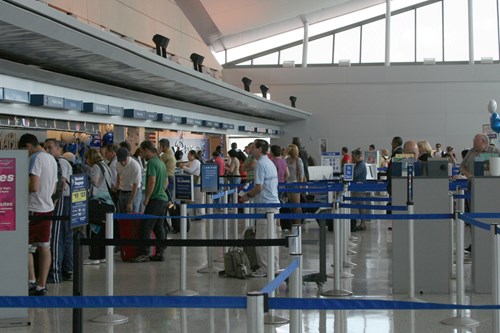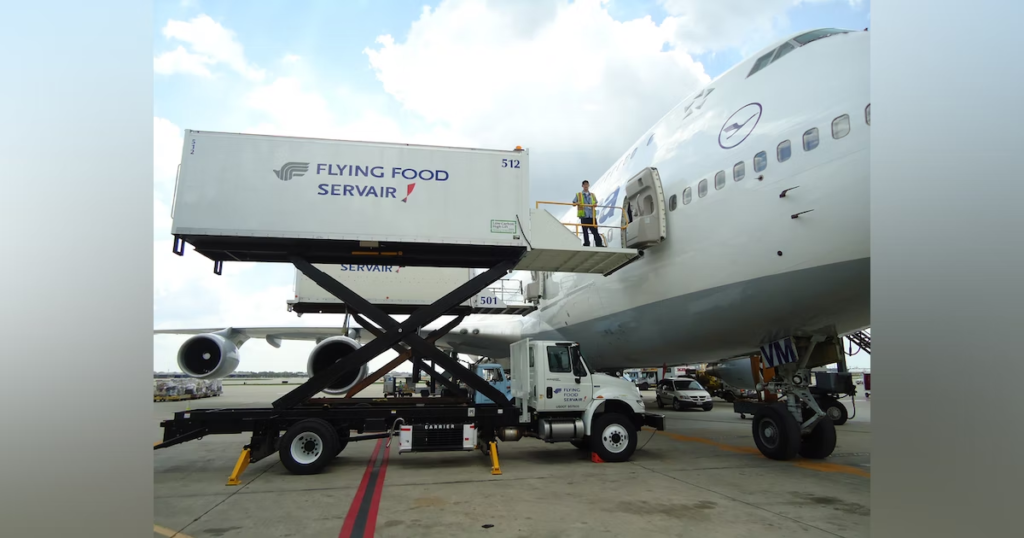Free Airfield Ground Lighting Technician course (6months)
Airfield Ground Lighting Technician:
Brief Job Description of Airfield Ground Lighting Technician: AGL technician is responsible installation of jigs, primary and secondary cables, airfield ground lighting, AGL fixtures, shallow/ deep bases, CCR’s distribution panels, substation electrical wiring, ALCMS panel and controls.
Personal Attributes: The individual must show analytical skills, reading skills, communication skills, inventory reporting, inspection skills, management skills. Understand electrical systems, diagrams, charts and notes.
Safety and security procedures:-
Comprehending the safety and security procedures of Airfield Ground Lighting Technician:

PC1. comply with the organization’s safety and security policies and procedures
PC2. comply with the regulatory guidelines on safe conduct of operations and maintenance of conditions to thwart any acts of unlawful interference
PC3. report any identified breaches of safety, and security policies and procedures to the designated person
PC4. coordinate with other resources at the workplace (within and outside the organisation) to achieve safe and secure environment
PC5. identify and mitigate any safety and security hazards like illness, accidents, fires or acts of unlawful interference if it falls within the limits of individual’s authority
PC6. report any hazards outside the individual’s authority to the relevant person in line with organizational procedures and regulatory guidelines
PC7. follow organization’s emergency procedures for accidents, fires or acts of unlawful interference in Airfield Ground Lighting Technician.
PC8. identify and recommend opportunities for improving health, safety, and security to the designated person
PC9. ensure all health and safety records are updated and procedures well defined.
Organizational Context of Airfield Ground Lighting Technician

KA1. hazard identification and risk management as defined within the organizational policy and procedures
KA2. legislative requirements and organization’s procedures for maintenance of safety and security standards and individual’s role and responsibilities in relation to this Airfield Ground Lighting Technician.
KA3. how and when to report hazards
KA4. the limits of responsibility for dealing with hazards
KA5. the organization’s emergency procedures for different emergency situations and the importance of following these
KA6. the importance of maintaining high standards of safety and security in Airfield Ground Lighting Technician.
KA7. implications that any non-compliance with safety and security may have on individuals and the organization.
Technical

Knowledge of Airfield Ground Lighting Technician:
KB1. different types of breaches of safety and security and how and when to report these
KB2. evacuation procedures for workers and passengers
KB3. how to summon medical assistance and the emergency services, where necessary
KB4. how to use the health, safety and accident reporting procedures and the importance of these
KB5. regulatory guidelines on dealing with safety and security emergencies.
Core Skills/ Generic Skills of Airfield Ground Lighting Technician:

| Writing Skills |
| The user/ individual on the job needs to know and understand how to: SA1. complete accurate, well written report in English language detailing the situations of emergency with attention to detail |
| Reading Skills |
| The user/individual on the job needs to know and understand how to: SA2. read instructions, guidelines/procedures/rules |
| Oral Communication (Listening and Speaking skills) |
| The user/individual on the job needs to know and understand how to: SA3. listen to and orally communicate information with all concerned. Professional Skills of Airfield Ground Lighting Technician Decision Making The user/individual on the job needs to know and understand how to: SB1. make decisions on a suitable course of action or response if permitted by the authority matrix Plan and Organize The user/individual on the job needs to know and understand: SB2. monitor efficient functioning of all activities SB3. plan and organize work to achieve targets and deadlines. Customer Centricity The user/individual on the job needs to know and understand how to: SB4. communicate with customers in a courteous manner SB5. maintain effective relationship with the customers Problem Solving The user/individual on the job needs to know and understand how to: SB6. identify trends/common causes for errors and suggest possible solutions to the supervisor / management SB7. identify and correct errors Analytical Thinking The user/individual on the job needs to know and understand how to: SB8. analyses best possible solutions (cost, time, effort, etc.) suited for operations Critical Thinking The user/individual on the job needs to know and understand how to: SB9. concentrate on task at hand and complete it without errors SB10. apply balanced judgments to different situations. Perform airfield ground lighting installation, assembly, testing and repair Airfield ground lighting installation, assembly, testing and repair PC1. perform installation of jigs and related tools PC2. install primary & secondary cables PC3. install AGL fixtures, shallow/ deep bases PC4. install CCR’s, distribution panels and substation electrical wiring as well as ALCMS panel and control PC5. interpret and explain system diagrams PC6. record progress and report to supervisor PC7. troubleshoot, maintain, operate, and repair all aspects of the Aeronautical Ground Lighting System PC8. demonstrate safety awareness at all times and should work in accordance with health and safety regulations as directed. Technical Knowledge KB1. electrical fundamenals series circuit: the characterstics of a basic series circuit are examined regarding electrical theory and the application of Ohm’s law KB2. airport lighting application: the advantages of using the series circuit in airport lighting as well as basic components of the system and theory of operation KB3. monitoring lighting circuit performance including insulation resistance measurement of underground cable systems and the interpretation of resistance readings KB4. connector kits and proper installation including use of specialized tools KB5. types of light sources used in airport lighting are covered KB6. elevated runway and taxiway light, their types and usage KB7. photometric requirements for elevated and in-pavement lights KB8. light bases and proper installation KB9. elevated and in-pavement light maintenance KB10. proper targeting of lighting maintenance by using mobile photometric testing KB11. maintenance of lighting bases KB12. airport sign applications such as mandatory signs, information signs and location signs are discussed KB13. electrical characterstics and loading KB14. proper sign maintenance KB15. standard FAA beacon types and signal formal KB16. rotating beacon maintenance KB17. lighted wind cones preventive maintenance KB18. REIL – Runway end identifier lights KB19. ODALs – omnidirectional approach lighting system KB20. maintenance of REILs and ODALs KB21. configuration and typical layout of MALS/ MALSF/ MALSR systems KB22. preventive maintenance and maintenance tolerances KB23. configuration and typical layout of ALSF I/ ALSF II/ SSALR systems KB24. configuration and typical layout of VASI KB25. configuration and typical layout of PAPI KB26. PLASI operation and maintenance KB27. constant current regulator (CCR) control KB28. control panels, switches to touch screens KB29. relay panels versus Programmable Logic Controller (PLCs) and distributed control via computer interdace KB30. controlling individual lights for low visibility operations, SMGCS (Surface Movement Guidance Control System), stop bar lights and lead-on, lead-off lights KB31. automatic insulation resistance testing and monitoring (Meggering) of airfield cable systems as part of the control system KB32. electrical hazards particular to series lighting circuits KB33. hazards of induced voltages. KB34. hazards of re-lamping energized fixtures KB35. VOM: Volt-Ohm-Milliammeter KB36. DMM: Digital Multimeter and clamp-on amp probe accessory KB37. insulation resistance tester (MegOhmMeter or Megger) KB38. underground Cable/ fault locator KB39. tone test set KB40. infrared temperature measurement scope KB41. time domain relectometer KB42. mobile photometric measurement system KB43. types of standby / emergency power systems – UPS (uninterruptible power supply) and diesel driven emergency generators KB44. ratings of generators KB45. automatic transfer switches Core Skills/ Generic Skills Writing Skills The user/ individual on the job needs to know and understand how to: SA1. keep records of inventory Reading Skills The user/individual on the job needs to know and understand how to: SA2. read electrical drawings and charts SA3. read and interpret electrical drawing, charts and symbols SA4. read and interpret electrical manuals for different light systems Oral Communication (Listening and Speaking skills) The user/individual on the job needs to know and understand how to: SA5. communicate clearly with supervisor and peers SA6. regularly communicate with all employees in the chain of activities to ensure activities are running smoothly SA7. share best practices with peers and juniors Professional Skills Decision Making The user/individual on the job needs to know and understand how to: SB1. decide whether faulty parts should be repaired or replaced Plan and Organize The user/individual on the job needs to know and understand: SB3. monitor smooth functioning of all activities SB4. prioritise and execute tasks in within the schedule time limits Customer Centricity Not applicable Prob lem Solving: The user/individual on the job need to know and understand: SB5. identify trends/ common causes for errors and suggest possible solutions to the supervisor/ management SB6. identify and correct errors Analytical Skills The user/individual on the job needs to know and understand how to: SB7. analyse on best possible solution (cost, time, effort, etc) suited for customer requirement Critical Thinking Skills The user/individual on the job needs to know and understand how to: SB8. concentrate on task at hand and complete it without errors. Model Curriculum Airfield Ground Lighting (AGL) Technician Follow safety and security procedures comply with the organization’s safety and security policies and procedures comply with the regulatory guidelines on safe conduct of operations and maintenance of conditions to thwart any acts of unlawful interference report any identified breaches of safety, and security policies and procedures to the designated person coordinate with other resources at the workplace (within and outside the organization) to achieve safe and secure environment identify and mitigate any safety and security hazards like illness, accidents, fires or acts of unlawful interference if it falls within the limits of individual’s authority report any hazards outside the individual’s authority to the relevant person in line with organizational procedures and regulatory guidelines follow organization’s emergency procedures for accidents, fires or acts of unlawful interference identify and recommend opportunities for improving health, safety, and security to the designated person ensure all health and safety records are updated and procedures well defined Perform airfield ground lighting installation, assembly, testing and repair perform installion of jigs and related tools install primary & secondary cables install AGL fixtures, shallow/ deep bases instal CCR’s, distribution panels and substation electrical wiring as well as ALCMS panel and control interpret and explain system diagrams record progress and report to supervisor troubleshoot, maintain, operate, and repair all aspects of the Aeronautical Ground Lighting System demonstrate safety awareness at all times and should work in accordance with health and safety regulations as directives Guidelines for Assessment Criteria for assessment for each Qualification Pack will be created by the Sector Skill Council. Each Performance Criteria (PC) will be assigned marks proportional to its importance in NOS. SSC will also lay down proportion of marks for Theory and Skills Practical for each PC The assessment for the theory part will be based on knowledge bank of questions created by the SSC Individual assessment agencies will create unique question papers for theory part for each candidate at each examination/training centre (as per assessment criteria below Individual assessment agencies will create unique evaluations for skill practical for every student at each examination/training centre based on this criteria To pass the Qualification Pack, every trainee should score a minimum of 70% in aggregate The marks are allocated PC wise, however, every NOS will carry a weightage in the total marks allocated to the specific QP |









